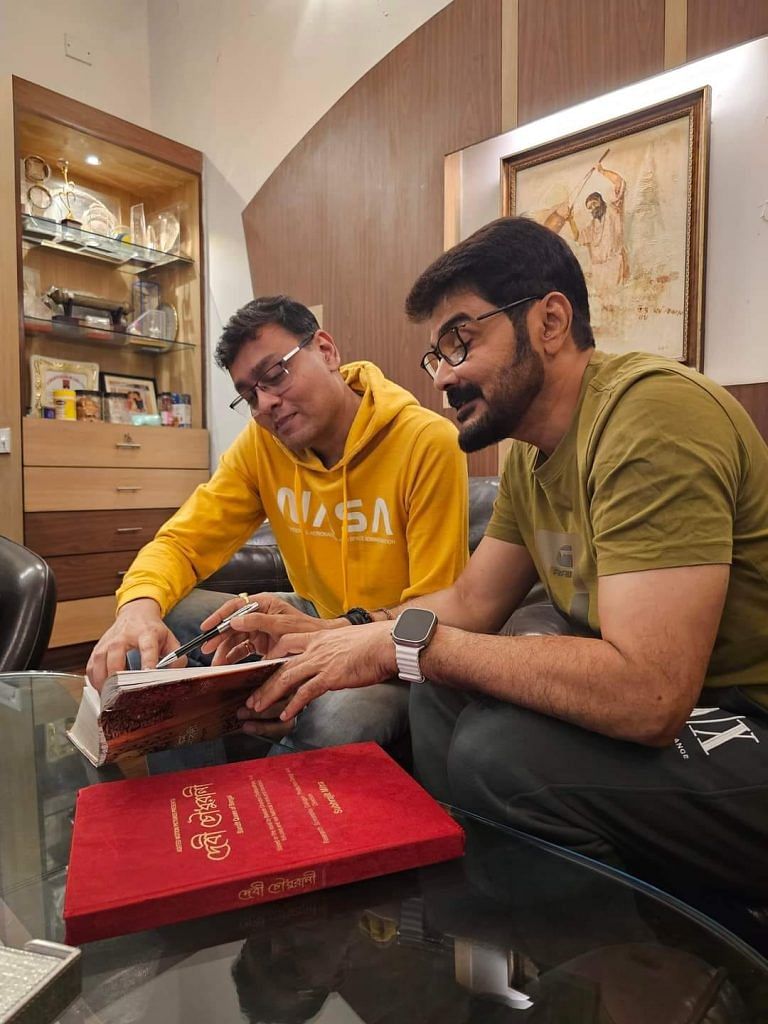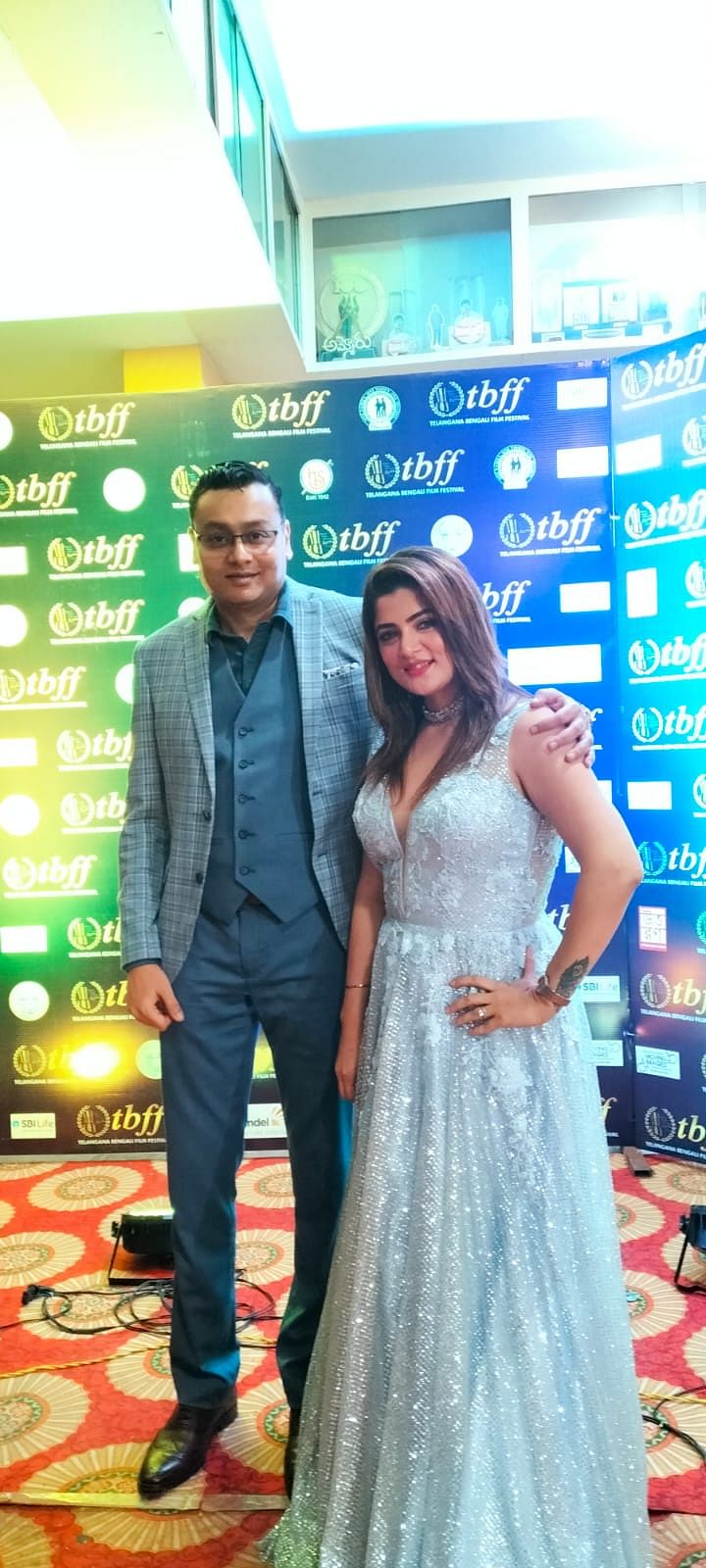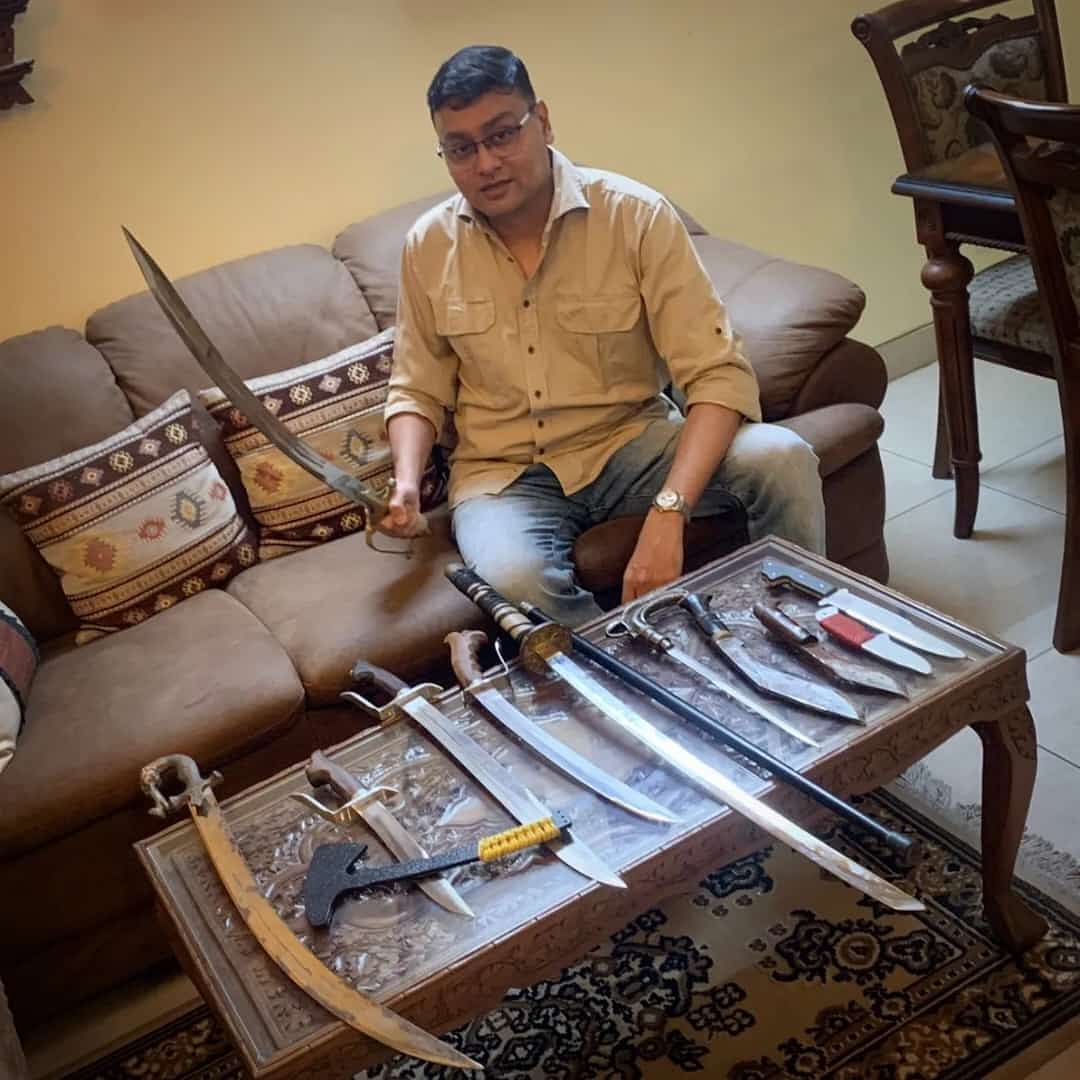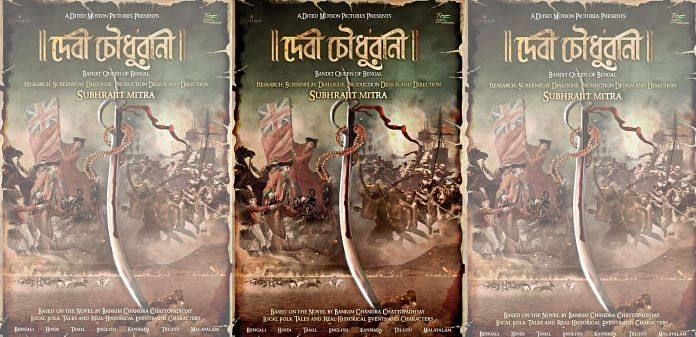As he stood atop a hill, drenched in sweat, the sun beating down on him without remorse, Bengali filmmaker Subhrajit Mitra saw a dense jungle below and wondered if a bandit queen could be hiding there with her army of brigands. It was 48 degrees and a heat wave alert had been sounded Bengal-Jharkhand border earlier in the day, but as Mitra came down the hill and trekked through a gorge to discover a hidden waterfall, he could imagine the queen of his story riding her horse with an open sword as her men followed her to battle. It was a moment of bliss for the filmmaker even as his eyes closed with exhaustion and he felt he could not take another step. Mitra could visualise his film, Devi Chowdhurani.
“Time stood still. It could have been 2023 or it could well have been 1770. My executive producers and assistants had followed me into that jungle in Jharkhand that is infested with cobras. Our local coordinators had warned us against such misadventure. But when you make a film, you go wherever the film takes you,” Mitra says. A doctor, a nurse and anti-venom injections followed the team everywhere they went. Many members of his team fell sick from the heat. But that didn’t stop the recce.
Back to the comforts of his apartment in south Kolkata, Mitra plans to move on to story boarding soon. With around 250 crew members, shooting for the film will begin from November. Nothing is being left to chance for Devi Chowdhurani, his magnum opus on the Sannyasi Rebellion of 1770, starring Bengali superstar Prosenjit Chatterjee and Srabanti Chatterjee in the lead roles along with a host of topline actors from the Bengali film industry. Devi Chowdhurani is budgeted at Rs 20 crore, a rather large amount for a Bengali film. The film has got the Bengali film industry talking even before the first scene has been shot.

What came as a surprise to Mitra was the fact that the budget of his film and his remuneration had become the biggest talking points in the local film industry and the press. He would have wanted the scale and ambition of his new project to have excited them more. He says a few questions were asked to him about his extensive recce in Jharkhand and the interiors of West Bengal to find the perfect locations or about how he is interpreting Bankim Chandra’s novel to make the film.
Mitra had researched for his film since the last two years. It will go on floors mid-November and is slated for world theatrical release in the last quarter of 2024. But by mid 2024, the film will be completed and taken to major international film festivals
“Yes, Devi Chowdhurani will be one of the most expensive films ever made in Bengali, but is that not a good thing for our film industry? If I succeed, we would not have to scale down our films any more. We would, as an industry, be able to think big. But like crabs in a jar, we try to pull each other down,” Mitra tells The Print.
After winning the National Award last year for his film Avijatrik (2021), Mitra wants Devi Chowdhurani “to be a pan-India film and also showcase a period of Bengal’s history when religiosity was not toned down like it is in Bengali films and literature today.”

Also read: Parambrata Chatterjee is a ‘man written by a woman’. He is Bengali cinema’s Irrfan Khan
The legend of Devi Chowdhurani
Mitra’s film is a cinematic take on Bankim Chandra Chatterjee’s novel of the same name. Published in 1884, it is the story of a feisty woman who went to battle against the British and won with the help of a band of Robin Hood-type bandits. Published just two years after Anandamath—a novel set against the background of the Sannyasi rebellion in the late 18th century—both these novels by Chatterjee were a call for a resurgent India to take on the tyranny of the British empire through bravery, austerity and Hindu religiosity.
Mitra feels it is perhaps this religiosity that makes today’s Bengali filmmakers sceptical about Chatterjee. He says most of them are busy making biopics of famous Bengalis, love stories and crime thrillers. And while Mitra does not have a problem with that, he feels the current generation should know about Bengal’s glorious history.
“We are stuck with (Satyajit) Ray, (Mrinal) Sen and (Ritwik) Ghatak. They were legends, no doubt, but should we not make films on our armed revolutionaries also? India has almost forgotten the names of most Bengali women and men who took up arms against the British and made the supreme sacrifice. Stories of Anushilon Samiti (fitness club that protected a secret society of anti-British armed revolutionaries) could be the subject of so many films,” he says.
But his own film Avijatrik or The Wanderlust of Apu, is a sequel to Satyajit Ray’s Apu Trilogy.
Mitra made several documentaries for National Geographic, Discovery and History Channels, as well as documentaries for Ministry of Home Affairs and Ministry of Defence. His first film was Mon Amour: Shesher Kobita Revisited (2008), then came Agunpakhi (The Phoenix) in 2010. It was a film on Maoist violence. It was banned by the erstwhile Left Front government. The film went to the final selection round of the Berlin Film Festival. Next he did three films on famous fictional Bengali detective Kakababu. They were released between 2011 to 2014.
In 2016, he made a film called Chorabali, which was an Indian adaptation of Agatha Christie’s Cards on the Table. In 2021, his film Avijatrik won five West Bengal Film Journalists’ Association Award including Best Director, three Filmfare Awards, 42 international awards along with two National Awards.
“Like I said, I am all for Ray, Sen and Ghatak. My point is why stop with them? Is there any dearth of heroes in Bengal’s history? Also, why shy away from Hindu narratives? “Debi Choudhurani” was made into a film long ago. Today, such subjects are not touched.”
A film titled Debi Choudhurani starring Bengali acting legend Suchitra Sen was released in 1974. The film was also based on Bankim Chandra’s novel. Mitra says his film will be unlike the older film as it will be a historical reconstruction and not an adaptation.
There is a reason why his colleagues have been avoiding such subjects as per Mitra.
“What do I say to this? I feel Bengalis as a people have become disconnected from their roots,” Mitra says.
Also read: After 350 films & 4 decades of acting, Prosenjit still reinvents himself with every new film
Reconstructing history
The filmmaker wants to bring Bengal of 1770 to screen. Mitra says his film will be a “historical reconstruction”.
“I have spent long hours studying East India Company records. I have visited libraries in India and the UK to dig out details of the happenings in this part of the world at that period. Debi Choudhurani is not fictional but a historical character. I have found her name in East India Company records. My film will be a historical reconstruction of her story and the Sannyasi Rebellion rather than an adaptation of Bankim’s novel,” he says.
It is not only the story of Devi Chowdhurani that fascinates Mitra, but also the Sannyasis who took up arms against the British. “How many Indians know today that the Sannyasis fought for 40 years against the British and were never defeated because they were trained in guerrilla war tactics? Warren Hastings, India’s first Governor General, tried hard but could not defeat them. Hinduism gave them the moral force to take on a mightier enemy, spirituality gave them the detachment to fight selflessly for Bharat Mata. They were not political. They just believed in the sanctity of this land that they considered holy and wanted to do their bit to keep its people free,” Mitra says.
For the film, Mitra has researched the Dhanurveda Samhita, the ancient Indian text on indigenous martial arts, and studied the techniques of Raibenshe, Bengal’s very own martial arts form. “I want the action sequences to look authentic and to bring to screen fighting techniques that have never been seen before. The actors will have to pick up these techniques. I have spent long hours and a considerable amount of money to procure weapons that will be used in the film,” Mitra says.

The global success of Telugu filmmaker SS Rajamouli’s RRR (2022), which married history to fantasy, isn’t what prod Mitra to pick a subject like this. “RRR is more fantasy than history. My film is the exact opposite. It will be a truly historical film more on the lines of Akira Kurosawa’s works,” he says.
Also Read: SVF is West Bengal’s own YRF. But this Tollywood kingmaker began with a rejection
Homage to motherland
Mitra wants Devi Chowdhurani to have a worldwide audience. The film’s motion poster was unveiled at the 76th Cannes Film Festival on 22 May. “We will be back at the Cannes in 2024 with the film, as well as all other big film festivals. I want to cater to an international audience to tell the story of warrior monks that has been buried in the footnote of history. Guess that is my way of paying homage to my motherland,” he says.
A whole host of movies released in the past couple of years have been branded as Right-wing films, from The Kashmir Files (2022) to The Kerala Story (2023) to Adipurush (2023). Mitra won’t be comfortable being bracketed in that category.
“I have a problem with badly researched and badly executed films like Adipurush. I am proud of my Sanatan/Vaidic identity. I revel in my culture and tradition, but I do not want to further any political ideology, whatever that might be, through my films. I am here to tell stories and I will tell them as best as I can,” he says.
It is hard to tell how big Devi Chowdhurani’s set will be. It is after all a story of Bengal’s feudal lords and ladies. Mitra wants to keep that a secret for now, though he says much of the shooting will be done outdoors. The film is being produced by Aniruddha Dasgupta and Aparna Dasgupta under the banner of Los Angeles-based production house ADited Motion Pictures.
(Edited by Ratan Priya)



